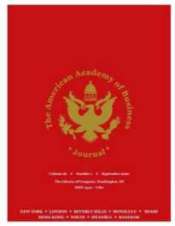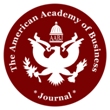|
The Challenge of
International Politics and Legal Structures on Business
Dr. Michael Ba Banutu-Gomez, Professor, William G. Rohrer
College of Business, Rowan University, NJ
Dr. Harold W. Lucius, Professor, William G. Rohrer College
of Business, Rowan University, Glassboro, NJ
ABSTRACT
Through research, we have found the most important aspects
of political and legal structures that affect businesses that are, or are
planning to operate on a global scale. The issue of political risk is one of the
main factors behind businesses deciding to enter a new market in a new country.
It is also one of the deciding factors for a business when looking to make deals
with another business in a foreign country. This, coupled with the legal
structure of the country, is two factors that weigh heavily on companies while
making decisions about international business opportunities. Today’s current
political and legal climate can be a very questionable one for businesses to
make decisions in. International business is heavily affected by this climate.
With this paper, we strive to gain a better understanding of the political and
legal issues that affect businesses operating on an international scale. We
also wanted to know more about what people in the business field feel about
certain situations that they could be put into, regarding international
business, and how they would react. With this research we hope to garner a
better understanding of what legal and political aspects of doing business
abroad affect how businesses operate. When looking at the political and legal
environments facing business it is important to understand all of the aspects
involved. We are first going to be investigating the political environment that
businesses must endure when dealing on an international scale. When looking at
the political environment we must first examine political systems on a macro
scale. Essentially, the argument comes down to individualism versus
collectivism. This argument is based off of balancing the rights of the
individual with that of the community.
Full text
Training and
Development Issues for Employees in Rural and Culturally Diverse Settings
Dr. Jacqueline N. Hood, University of New Mexico, NM
ABSTRACT
This paper uses a case study approach to investigate the
factors relevant to professional development and training programs in rural and
culturally diverse areas in the United States. Focus groups were utilized for
qualitative data collection with grounded theory as the methodological basis for
developing a model for training of employees in a large state department in
rural and culturally diverse settings. Three areas of consideration emerged from
the data. First, learning styles of ethnically and geographically diverse
employees need to be addressed by training program developers. Second, issues
related to pedagogy need to be considered including whether the training should
be formal or informal, the quality of instructors, whether the training should
be internet-based or use a classroom setting, and the training level appropriate
for the skill level of the employee. Third, two major organizational issues
should be addressed in training program development, including the cost of the
training and assessment of learning outcomes. The paper provides suggestions for
future research. Research has indicated that there is a significant correlation
between an employee’s level of workplace skills and their productivity and
success on the job (Kuchinke, Brown, & Anderson, 1998). Enhancing workplace
skills leads to more usage of these skills on the job as well as greater
employee participation in ratings by supervisors (Bergmann, 1995). Recent data
indicates that the spending on training in the U.S. rose 32.5% in 2017 to a new
high of $90.6 billion (2017 Training Industry Report). Given the size of the
training efforts and the positive outcomes of successful training, methods to
identify and assess the skills needed and to provide requisite education and
training should be of paramount concern to organizations.
Full text
Perceived
Learning from a Business Simulation: Does Gender Matter?
Dr. Nancy Haskell, Professor,
Laval University, Quebec, Quebec, Canada
Dr. Donald Béliveau, Professor, Laval University, Quebec,
Quebec, Canada
ABSTRACT
This paper focuses on learning during a
business simulation as perceived by students, and more specifically on
differences in perceived learning between female and male students. The study
measures students’ perceptions of achievement on learning objectives grouped
into seven goals used by a major business school to guide program development.
Precisely, we focus on gender differences in perceived learning based on
progress measured at three points in time during participation in a complex
business simulation. Analysis indicates a pattern of greater perceived
achievement on seven program learning goals by female than by male participants,
with significant differences on two of these: Decision making and
Information and communication technology. Interestingly, although early
scores are quite variable for both females and males, mean scores for female
respondents consistently reflect somewhat lower perceived achievement on
baseline measures than males but greater progression and perceived achievement
on objectives by the end of the simulation experience. Limitations include
measures based on student perceptions of achievement and progressive learning,
the potential difficulty for participants to identify simulation-specific
learning, and sample size. Future longitudinal research could explore the impact
of self-confidence, prior preparation, and the correlation of perceptions and
grades. Findings deepen our understanding of the impact on learning of complex
business simulations in general and suggest that gender may be an important
factor to take into account when designing simulation courses. To our knowledge,
this is a first attempt to explore differential learning responses by gender in
a business simulation. Concern for the effectiveness of education in general
and of management education in particular is the subject of much debate in the
face of the imperatives of global competitiveness, economic difficulties, severe
budget constraints, and the shrinking population of potential candidates due to
demographic shifts.
Full text
What are the Primary Contributing Factors to Economic Development in a US
Community?
Dr. Gordon W. Arbogast,
Jacksonville University, FL
Leinesa
Adams, Jacksonville University, FL
Holly
Decardenas, Jacksonville University, FL
Dr. Vikas Agrawal,
Jacksonville University, FL
ABSTRACT
Economic development is the goal of every community in the
country. This research paper is an estimate of the relationship between
economic growth of a community (cluster) versus a number of independent
variables including STEM (Science, Technology, Engineering and Math) Employment,
Violent Crime, Housing and Educational attainment. The selected dependent
variable was a measure of economic development using its local Global Domestic
Product (GDP) growth within a Metropolitan Statistical Area (MSA) over the
5-year period (2012-2016). It was hypothesized that economic growth is a complex
variable with multiple factors that may affect growth. The Independent
variables employed were either a change (delta) between 2011 and 2015 or an
indexed value to a reference year. The dependent variable was lagged one year
to allow for proper impact. A stepwise analysis was performed to select the
most relevant variables. A final multiple linear regression was performed on
the variables identified as significant in the stepwise analysis. This output
data was analyzed for both fit and outliers. The analysis showed that there was
a likely relationship between local GDP growth and education attainment of a
baccalaureate or higher degree and median housing price growth. The United
States is a vast country with many metropolitan statistical areas. A
metropolitan statistical area (MSA) is a geographical region defined by the
United States Census Bureau with a relatively high population density at its
core and close economic ties throughout the area.
Full text
Dividend Payout Ratio,
Investment opportunities, and the Pecking Order Theory: Evidence from Taiwan
Dr. Joe Ueng, Professor, University of St. Thomas,
Houston, TX
Dr. Vinita Ramaswamy, University of St. Thomas, Houston,
TX
ABSTRACT
This paper applies the two-stage least square (TSLS)
method to test the prediction of the pecking order theory that there is a
negative interaction between dividend payout ratio and investment by a Taiwanese
pooled sample for the period 2002-2007, before the global financial crisis. The
result is supportive of this prediction. It also observes that there is a
positive interaction between dividend payout ratio and financial leverage over
the same period. This paper adds to the previous studies by using the TSLS
method. The results accord, in general, with the previous evidence as far as the
effect of dividend payout ratio and investment, and the effect of dividend
payout ratio on financial leverage. The only inconsistence with the previous
evidence is the interactive effect of financial leverage and investment. How
should firms finance their investment projects? The pecking order theory is the
central theory of this financing decision. According to Myers (1984), due to
adverse selection, firms are predicted to prefer internal finance as their main
source of funds for investment. Next in order of preference is debt, and last
comes external equity financing. There are at least two other predictions of the
pecking order theory. (1) Internal finance is first used to undertake
investments prior to dividend payouts. Thus, investments are predicted to have a
negative influence on dividend payouts. (2) Investments will be forgone or
postponed since internal finance has been used to pay dividends.
Full text
IBM Pension Accounting
Reexamined
Dr. Lianzan Xu, Professor, William Paterson University of
New Jersey, NJ
Dr. Francis Cai, Professor, William Paterson University of
New Jersey, NJ
Dr. Ge Zhang, William Paterson University of New Jersey,
NJ
ABSTRACT
This paper reexamines IBM’s pension accounting in 2001 in
particular, and before and after 2001 in general, as reported in its annual
financial statements. We compare the discount rates and expected rates of return
used by IBM in 2001 with the average rates by S&P 500 companies and IBM’s own
rates in 2000 respectively. We found that IBM lowered its discount rate and
raised its expected rate of return in 2001 as compared to S&P 500 and IBM 2000,
resulting in additional hundreds of millions of dollars of paper profit in IBM’s
2001 reported net income. IBM’s manipulation of earnings through pension
accounting dates back prior to 2001 and continues after 2001 till today. In
this study, we look at how IBM uses pension accounting to manipulate its
earnings. IBM did it in 2001 and caused quite a stir in Wall Street and among
its investors. As a matter of fact, IBM did it way before year 2001 and keeps
playing the same trick ever since. It is really amazing to see companies like
IBM can do it over such a long span of time and with such a magnitude as
billions of dollars of non-exiting profit are pumped into its annual report year
after year, and get away with it easily and unscathed. The primary components
are service cost, interest cost and expected return on plan assets (PA). Service
cost is estimated by actuarial and firms have little discretion over it. What
management can really manipulate is twisting the discount rate and expected rate
of return (ERR) on plan assets. If a company’s projected benefit obligation (PBO)
and pension plan asset are small, the impact can be insignificant. If, on the
contrary, a company has huge projected benefit obligations and pension plans,
the difference can be huge as well. IBM belongs to the latter.
Full text
Physicians’
Intention to Leave Their Jobs: Validation of a New Model
Dr. Caroline A. Mathieu, Université
Laval, Canada
Dr. Nabil Amara, Université Laval,
Canada
Dr. Caroline Biron, Université Laval,
Canada
ABSTRACT
Physician retention presents a challenge in several
countries. This study applies structural equation modeling to verify the
performance of a proposed new physician retention model, the Conflict
Demands-Resources model. This is an extension of the Job Demands-Resources model
and was validated with a population of 1,069 family physicians in Canada. The
variables used to perform the analyses included job resources, job demands,
exhaustion, work engagement, work-family conflict, and intention to leave. The
results show that the proposed new model (CD-R) is efficient. Shortage of
doctors is a problem in many countries, including the United States, Finland,
the United Kingdom, Sweden, and Canada (Latour, 2003). Whether physicians leave
because of the considerable demands of the profession (Salsberg & Grover, 2006)
or the attractiveness of private practice and leaving publicly funded clinics
(Statistics about Physicians, 2004), physicians leaving their current practices
present a real problem in any country. Renewing a workforce that is leaving
voluntarily represents a source of potential costs for organizations in terms of
loss of human resources and disruption of continuous activities. Evaluating a
model for intention to leave requires researchers to adapt to the specific
environment in which a given group of workers has evolved in order to understand
the complexity of their situation (Holtom et al., 2008).
Full text
The
Conception and Evaluation of the “Hard” and “Soft” Models of HRM. Demonstrate
How HR Practices in the Key Practice Areas (Recruitment, Development, Rewards
and Appraisal) Might Differ between an Organization Pursuing the “Hard” HRM
Approach and Another Organization Pursuing the “Soft” HRM Approach
Hsien-Mi Lin, Director, Human Resource
Office, Cardinal Tien Hospital, New Taipei City, Taiwan R.O.C.
ABSTRACT
Human resource management (HRM) is a new way of thinking
about how people should be managed as employees in the workplace.
It is gaining expeditious and widespread acceptance as a new
term for managing employment. It has frequently been described as a
concept with distinct forms: hard and soft models. The hard
model of HRM emphasizes the rational concept of strategic fit and stresses the
importance of the management of performance and an instrumental approach to the
management of individuals. In contrast, the soft
model of HRM focuses on individual employees and their self-direction and set
commitments, trust as well as self-related behaviour at the centre of any
strategic approach to employees. Both hard and soft models of HRM seem to be
based on opposing views of human nature and managerial control strategies. The
hard model is based on notions of tight strategic control while the soft model
is based on control through. However, it is possible to consider the
implications of different combinations of them. In addition, the hard
and soft models of HRM propose many ways for better management of human
resources. They contain many of the areas of personnel management, such as
recruitment, selection, training and development, rewards and appraisal, and
share a concern for achieving the strategic needs of organization. There is no
single organization that adopts either a soft model or a hard model to manage
the human resources.
Full text
Leadership For the
Conduct of Employees; The Influence of Ethical Culture and Climate
Dr. Julia Buchanan, National
University, La Jolla, CA
ABSTRACT
Even though there is much written concerning ethics in
organizations, there is little empirical research on how leadership effectively
changes the behavior of individuals in an organization to become more ethical.
This paper will review the literature on ethical climate as an element of
organizational culture and the impact it has on an individual’s behavior. Much
of the literature is theoretical in nature and contains recommended strategies
that would likely impact behavior. Therefore, this review of the literature on
ethical climate will explore how organizations can change and improve the
ethical climate and how the climate is connected to the organizational culture.
Of particular interest is discovering what is known about changing the ethical
climate of an organization and how an ethical climate is maintained. In 2001,
The Ethics Commission for a mid-sized city in California, was created by the
City Council. Later that year, ethics training was conducted for all
unclassified managers, elected officials, and department managers which included
training on ethical concepts, city codes, and council policies. Since that time,
a number of significant ethical violations have occurred from the same
unclassified group of management and elected officials that received the ethics
training. The violations included accepting money from lobbyists for policy
decisions leading to the indictment of three elected officials, and conflict of
interest violations leading to indictments of four Pension Board directors.
Full text
An Analysis of
Instruction Expenditures and Public High School Completion on Hawai‘i’s Big
Island
Dr. Larson Ng, University of
Hawai‘i at Mānoa, Honolulu, Hawai‘i
ABSTRACT
The following study attempted to analyze the impact of
instruction expenditures on public high school completers on Hawai‘i’s Big
Island. Using the high schools that comprise the Big Island District, a
correlation and bivariate regression procedure were employed to determine the
nature and econometric relationship between instruction expenditures and high
school completion from 2000 to 2007. Although instruction expenditures had
increased for all high schools, increases in completion were not observed for
all schools. Moreover, although four high schools econometrically showed
positive relationships towards completion, there was no conclusive econometric
evidence to validate that additional expenditures in instruction lead to higher
levels of high school completion during 2000 to 2007. Instruction is a
critically important factor that contributes to high school completion. Although
there are many techniques to measure the productivity of instruction, assessing
its effectiveness through a financial perspective remains one practical way to
accomplish this task (Beard, 2009). Consequently, this study will attempt to
test whether increases in instruction expenditures result in higher numbers of
high school completion by analyzing the Hawai‘i’s Department of Education’s
(DOE) high school instruction expenditures (i.e., teacher salaries and benefits,
substitutes, instructional paraprofessionals, pupil-use technology, software and
instructional materials, trips, and supplies) and its econometric relationship
with high school completers on the Big Island of Hawai‘i (Hawai‘i Department of
Education, n.d.).
Full text
Economic Hardship on
Multicultural Families Youths and HRD in Korea
Dr. Namchul Lee, Korea
Research Institute for Vocational Education and Training, Korea
ABSTRACT
Recently, with the rapid
increase of multicultural youths in Korea, it is very likely that they will
become important economic and social interests in the future. The purpose of
this study is to analyze the status of economic activity and vocational
education and training of multicultural youths and to suggest policies to
support them. To do this, survey of a national-level and government research
institute was used. The main contents of the research analyzed of previous
literatures, multicultural families and youth human resources, economic, social
situations, and problems. Chapter II explained the data used by the South Korean
government and national-run research institutes for this research. In Chapter
III looked at the status of human resources for multicultural families and
youths. Chapter IV analyzed the current situations in terms of economic and
human resources development. The final chapter suggested conclusions and policy
suggestions. In recent years, the number of foreign immigrants and multicultural
youths in Korea has been increasing. Various researches and policy interests
have been increasing for social adaptation, human resources development and.
vocational education and training support. In particular, the fast-growing trend
of multicultural youths is likely to emerge as an important economic and social
concerns for the implementation of the labor market in the near future.
Therefore, the government should actively push for vocational education and
training policies to develop into a global human resources for multicultural
teenagers who are bilingual and multilingual through human resources
development.
Full text
Investigating if
Multidisciplinary or Homogenous Teams Are More Innovative in a Higher Education
Setting
Blake Hoover, Brigham Young
University, Provo, UT
Dr. Geoffrey A. Wright,
Brigham Young University, Provo, UT
ABSTRACT
This study is derived from the claim that
multidisciplinary groups are more innovative than homogeneous groups; a claim
that has flooded the business industry and has become criteria for accreditation
in higher education. However, the impact of disciplinary diversity in work
groups is a growing area of research; therefore, it is yet to be thoroughly
understood. The purpose of this study is to answer the question: are
multidisciplinary teams more innovative than homogenous teams. To accomplish
this university students from differing majors were sorted into
multidisciplinary and homogeneous groups while participating in a two-day
innovation course. The course taught the students about divergent thinking, and
invited them to work as teams to develop an innovative product, system or
service. Each groups’ final product was independently judged by three experts
using the Creative Solutions Diagnosis Scale (CSDS) measuring the innovativeness
(functional creativity) of student work. The homogeneous groups outscored the
multidisciplinary groups in every category. Group dynamics have been assessed as
also playing a vital role in the successfulness of a diverse group. The Teamwork
Quality Questionnaire (TWQ) was used to measure the quality of team
interactions, student sentiments, and student attitude.
Full text
Students’
Misconceptions of Statistics
Dr. Leonard Presby, William Paterson University, NJ
ABSTRACT
Statistics is the skill of good judgment making in the
face of uncertainty and is used in many disciplines such as financial analysis,
econometrics, auditing, production and operations including services improvement
and marketing research. Statistics educators have long recognized the importance
of empowering students with statistical thinking skills that could be applied in
and beyond the classroom. But, often students feel the application of statistics
is evident and obvious. The determination of a result, they feel, is often
logical. The aim of this paper is to investigate the degree of students’
misconceptions of statistics. Twelve statistical questions were presented to
students at both the undergraduate and graduate level to see their
understanding. Findings show that students often arrive at incorrect solutions
in applying their intuition to common statistical situations. The overall
results show that some students have poor statistical reasoning skills. They do
seem convinced, however, of the correct answer when the solution is demonstrated
to them. Students left the course with a positive appreciation of statistics.
This study suggests that statistical reasoning should be taught strategically so
as to minimize misconceptions among students as well as to empower their
statistical reasoning ability. The ability to understand and apply Business
Statistics is becoming increasingly important in industry. A good understanding
of Business Statistics is a requirement to make correct and relevant
interpretations of data.
Full text
Tax Burden and Taxation
Rules of The Financial Instruments (Theory and Practices)
ABSTRACT
This paper examines tax burden and specially taxation of
financial Instruments in general and Turkey. In recent years, important
changes have occurred in tax laws especially in income tax code. Tax
harmonization, tax co-ordination, tax competition are expressions, which are
used to describe the processes of approachments of the taxation systems in
different countries, or which lead to such outcomes. Our study underlines the
importance of fundamental regulations that govern financial markets and their
role in increasing the operation ability of the market with special emphasis on
taxation policy as a means of supporting financial products. It can be said
that taxation, the tax exception and exemptions aiming at developing financial
markets are applied differently according to the income receivers.
Prejudice in Internal
Auditing in the Saudi Arabian Governmental Sector
Dr. Mohammed A. Alabbas, King Khaled University, KSA
ABSTRACT
This study investigates the prejudice in internal auditing
in the context of the Saudi public sector, and attempts to fill a gap, and
contributes to the internal auditing literature by applying the prejudice model.
Structural Equation Modeling (SEM) is utilized to analyze associations between
variables. A sample of 365 is participated, and the results indicate that
attitudes toward internal auditors vary among participants, nonetheless there
are indications that auditees feel threatened by realistic or symbolic harms and
intergroup anxiety. This study is limited to the Saudi context and cannot be
generalizable to other contexts, hence, similar research in behavioral topics is
needed. This study will be useful to IIA, other regulators, and practitioners
because it provides insights into factors that threaten
internal auditing and may useful in identifying causes of threats in auditing
reports. The internal audit function is an important element of the corporate
governance structures (Gerrit, Abdolmohammadi, & Lenz , 2012; Ferrya, Zakaria,
Zakaria, & Slack, 2017; Tang, Yang, & Gan, 2017). Similarly, internal audits
affect the quality of financial reporting (Christ, Masli, Sharp, & Wood, 2015;
Kasim, 2015; Gros , Koch, & Wallek, 2017). However, this function may not always
be effective (Al-Twaijry, Brierley, & Gwilliam, 2003; Mihret and Woldeyohannis,
2008; Christ, et al., 2015; Coetzee and Erasmus, 2017) and may encounter
conflict within organizations because auditees may not fully understand the role
of the internal auditor in the organization (Mihret, James, & Mula, 2010). More
so, it is difficult to convince people within organizations of the value of
internal audits (Sarens and De Beelde, 2006; Nobel, 2010; Mihret et al., 2010;
Nuijten, Twist, & Steen, 2015).
Full text
|

 The American Academy of Business
Journal
The American Academy of Business
Journal

